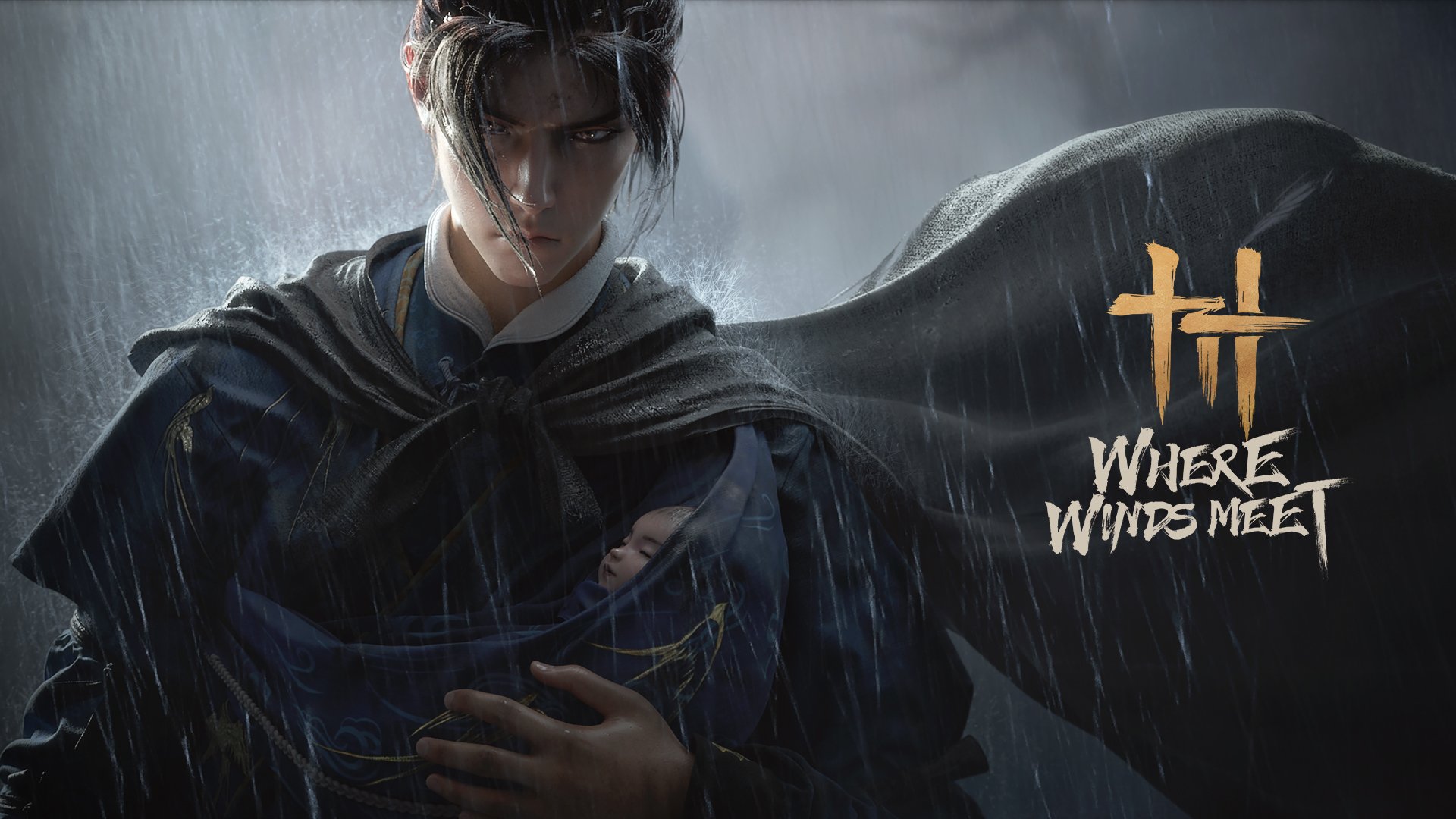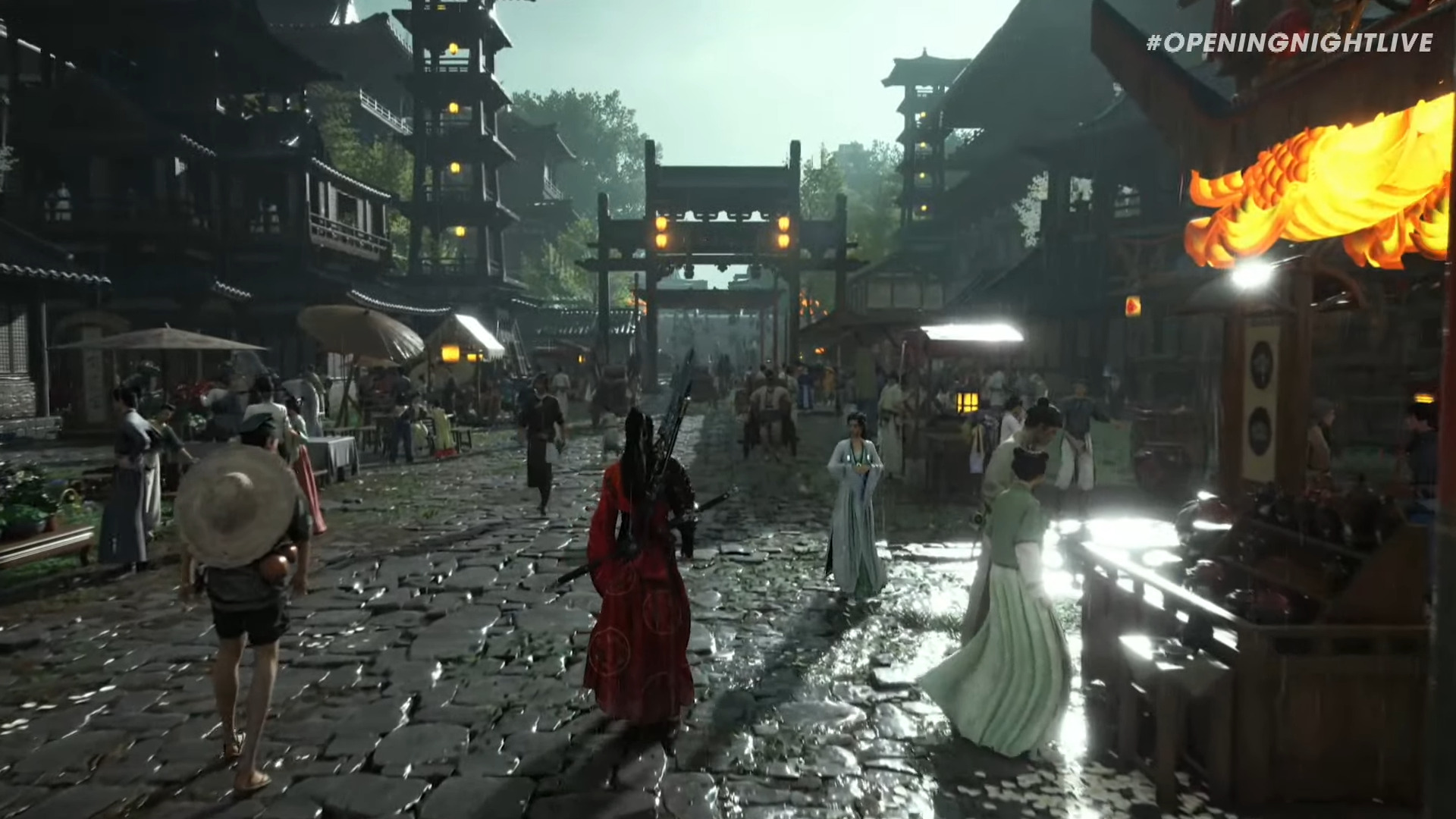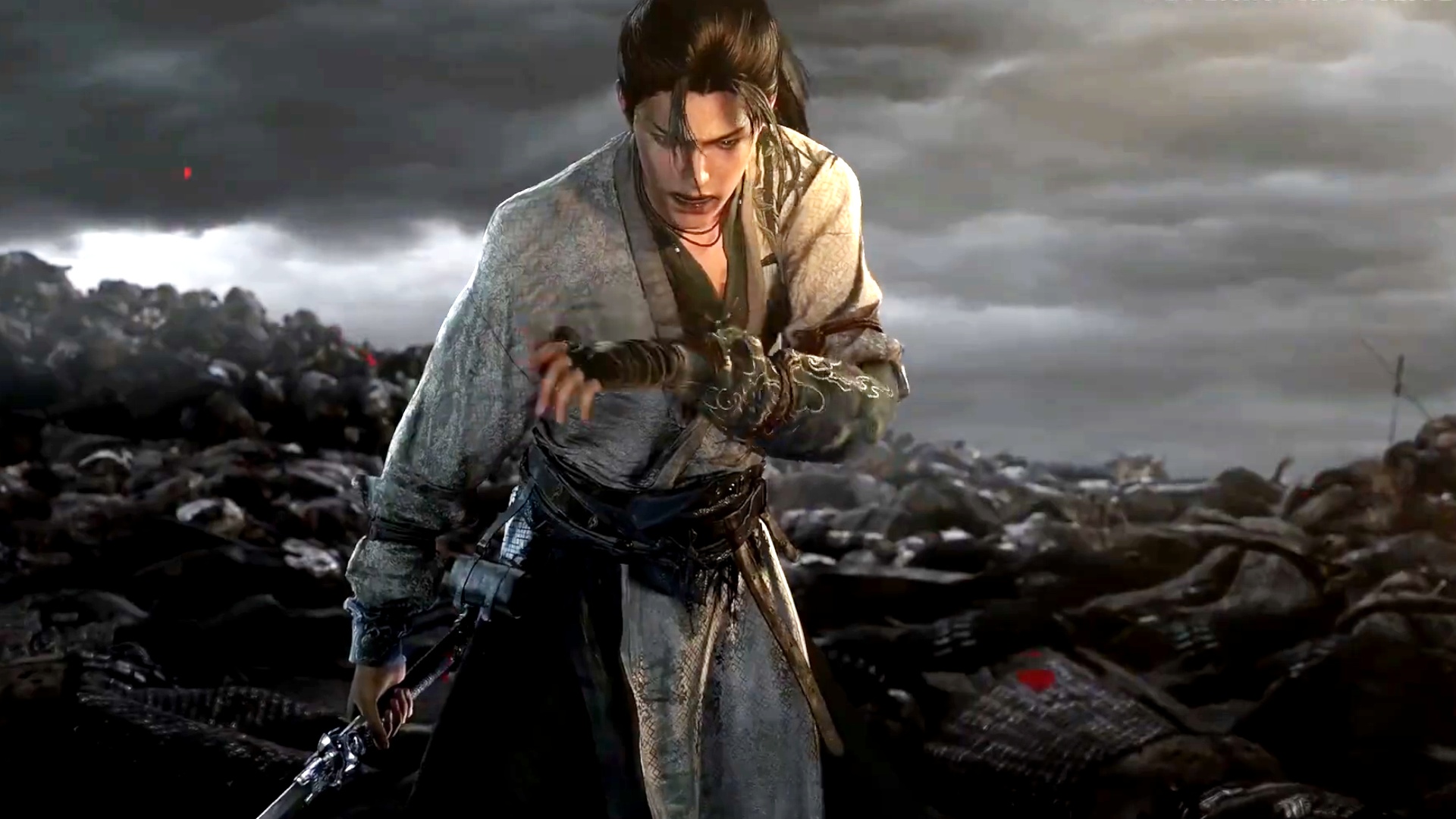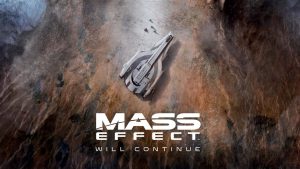
One of the most surprising announcements last year was Where Winds Meet. China-based Everstone Studio isn’t necessarily a developer that’s widely known right now, but when the developer unveiled its open world action RPG at Gamescom 2022, we all sat up and took notice as one. On top of a massive open world in a rich and fascinating historical setting, Where Winds Meet is also promising an extreme emphasis on player choice and freedom in a way that few other games do, while its emphasis on martial arts combat is another element that’s caught the eye of many. There is, of course, plenty that we still don’t know about the game, and as such, we recently reached out to its developer with some of our most burning questions about it and what’ll make it tick. Below, you can read our interview with Everstone Studio.
"This complex era saw many legendary events and heroes, many of which are scarcely recorded, and various versions of individual experiences and outcomes exist, all of which provide room for our creativity."
What was the rationale behind setting Where Winds Meet in the twilight of the Ten Kingdoms era?
Our starting point was to do something different. The prosperous Tang and Song dynasties, the turbulent Three Kingdoms, as well as the Yuan, Ming, and Qing dynasties have already been explored extensively in other works. Upon researching, we discovered that the Five Dynasties and Ten Kingdoms period was actually a fascinating time. In history, it was a rather chaotic era, located between the two golden ages of the Tang and Song dynasties. The chaos was subsiding, prosperity was near, old heroes disappeared in the smoke of battle, and new warriors had not yet had a chance to grow. This is the unique charm of a complex era. Such troubled times gave birth to a diverse and inclusive culture, and a multitude of fascinating legends. For creators, such an era is very captivating. Whether it’s art, plot, or experience, there is much fresh creative space and the potential to convey many valuable expressions.
Considering the historical setting, what kind of balance is the game seeking to achieve between historical accuracy and the freedom to tell its own story without being constrained by facts?
Historical-based creation is a common method in literature and game production. The restoration of history and the era is the foundation of our storytelling. On this basis, the very unique period from the Five Dynasties to the early Song Dynasty provides us with a lot of room for creativity. This complex era saw many legendary events and heroes, many of which are scarcely recorded, and various versions of individual experiences and outcomes exist, all of which provide room for our creativity. Many of the stories in the game are extended creations based on famous historical events of this era, and the player’s backstory will be linked to a significant event in this history. In the game, players can meet some well-known historical figures and uncover the unknown secrets of that era along with our story. There are also some characters who were already dead when the player character was born, but many people still follow their ideals. Players can see the impact these heroes had on the world through our story.
Where Winds Meet is making intriguing promises about the level of freedom it will offer to players in determining their roles in the story. Can you tell us how different these choices will be, and how much they will impact the gameplay experience?
High freedom is an important experience we hope to provide to players. The experience of freedom is based on the authentic replication of the martial arts world and giving players sufficient freedom of choice. As for the reproduction of the martial arts world, for example: in the world of martial arts, it’s inevitable to get hurt. We have tried to recreate a system of physical conditions and illnesses for characters and NPCs in the game. Players and NPCs can fall ill for various reasons, such as catching a cold due to temperature changes, breaking a bone from falling from a height, or becoming demon-possessed due to improper martial arts practice. If not treated promptly, injuries and illnesses can worsen. So players can choose to be a wandering doctor, treating patients and constantly improving their medical skills to become a master physician.
In addition to being a doctor, players also have other choices in the game. You can be an orator, using the power of language to convince NPCs to follow your suggestions or avoid battles; you can be an architect, constructing imaginative buildings; or a bodyguard, protecting players or NPCs from assassins; or even a ferryman, sailing rivers and carrying passengers – these diverse professions all contribute to the fresh and interesting gameplay, together creating a free experience in the martial arts world. In terms of player freedom, we have defined three main gameplay directions: profession, world exploration, and martial arts advancement. Players can freely choose their path in the world of martial arts, or choose to experience all aspects.
These free gameplay routes interact with each other to create different experiences. For example, a player skilled in construction can use their abilities to create shortcuts and change their world exploration experience, or alter the terrain to cleverly defeat enemies, changing the combat experience. In each gameplay direction, we hope to offer players more freedom of choice through the reproduction of the martial arts world. For instance, in combat, many unique martial arts techniques in the world require one to join a specific sect to learn, with various strange rules and entrance conditions, the process of which might be exceptionally challenging. Of course, you can also “steal” skills, but the process is fraught with risks, and once discovered, you will have to pay a price. There are also some esoteric skills that require serendipitous moments during exploration to learn, such as learning the “Lion Roar Skill” by ringing a series of bells, accidentally acquiring the “Bird Summoning Technique” from a bird’s nest, or understanding the “Toad Skill” by observing the behavior of toads.
"High freedom is an important experience we hope to provide to players. The experience of freedom is based on the authentic replication of the martial arts world and giving players sufficient freedom of choice."
Where Winds Meet’s martial arts-focused combat is seemingly going to be an important part of the experience. What should players expect from the game’s style of combat and how much freedom players will have in tailoring it to their prefered style of play?
Where Winds Meet is an oriental martial arts-themed game in which we place significant emphasis on the presentation of martial arts elements. Weapons play an essential role in players’ combat capabilities. We’ve tried to recreate a wide range of unique weapons found in Eastern martial arts in the game, such as spears, swords, fans, dual swords, umbrellas, long knives, etc. These weapons are differentiated by various factors like handling, moves, weight, speed, and range.
Beyond the weapons, there’s another equally important aspect of combat ability, which draws on the traditional Eastern martial arts technique – Kung Fu. It includes realistic hand-to-hand combat and some concepts that break physical rules, filled with romantic imagination. We hope to showcase the unique charm of martial arts combat through this. In the demo, you can see that many martial arts moves are drawn from concepts in Eastern Kung Fu. For instance, many players mentioned “acupoint hitting” – a technique from a distance using special power to stimulate airflow, hitting specific parts of the enemy’s body, causing rigidity and immobility. This is a form of “Qigong”. Such techniques have appeared in many martial arts literature and films (like “Crouching Tiger, Hidden Dragon”) and are being replicated in a game for the first time.
We also have many other exciting Kung Fu designs. For instance, Xingyiquan (like Toad Kung Fu, Lion’s Roar), which mimics animal hunting behaviors, or lightfoot skills to quickly traverse terrain obstacles like mountains and walls, and even leap over animals and enemies using their momentum.
These martial arts elements will bring interesting variations and experiences to combat. Besides combat abilities, there’s another category we call “Jianghu skills” that will play a crucial role in exploring the open world and interacting with NPCs. For example, the Tai Chi’s core mechanism of using an opponent’s force against them allows players to change the direction of water flow or gather the power of fallen leaves, giving them control over the environment. The collision and fusion of Eastern martial arts abilities and the open world is precisely the unique experience we want to create.
How large will the game’s open world setting be? What can players expect in terms of how varied its environments will be?
We hope to achieve a 5KM*5KM size at launch. The explorable area will have a three-dimensional structure, with mountain peaks, ground level, underground, underwater, etc., providing a rich spatial experience. As updates roll out, we’ll continue to release new map areas with unique environmental features and exploration experiences.
We want to strengthen the environmental characteristics of different regions in the game while maintaining historical authenticity. The initial map will include two large areas: Qinghe and Kaifeng.
We aim to make Qinghe a beautiful “hometown”. Here, instead of bustling cities, we have vast fields, simple villages, and a range of moving natural ecologies. Qinghe will feature diverse landscapes like open plains, secluded villages, and river caves. Because of its historical background, players can feel the influence of history on the land with ruins of war, secret underground caves, and secluded villages rich in cultural history.
Kaifeng, one of China’s eight ancient capitals, was one of the largest cities in the world at its time. We aim to recreate this ancient city in the game on a large scale, showing the cultural characteristics of that era. As the game updates, we will release more distinctive areas.
What can you tell us about Where Winds Meet’s traversal mechanics? How much will players’ unique martial arts abilities be emphasized where moving around the open world is concerned?
We aim to create an open world with distinctive oriental martial arts features. This involves the integration of martial arts characteristics with the open world. This is not a simple combination, but a true integration where the removal of either element would collapse the game experience.
One major characteristic of martial arts is the romantic and fantastical martial arts techniques. We’ve demonstrated some of these techniques and their interactions with the world in our demo, like using internal force to fish, fire breathing to ignite grass, the Lion’s Roar to scare off bears, and moves like acupoint hitting, attracting objects from a distance, and Heavy Fall. All these can help players achieve their exploration goals.
We’ve adopted a “multiplicative” design approach to build many complex exploration challenges. This ensures the sense of immersion in martial arts while integrating these unique martial arts abilities with the environment, adding elements of time and space to form a deep and enduring martial arts exploration experience.
"We’ve adopted a “multiplicative” design approach to build many complex exploration challenges. This ensures the sense of immersion in martial arts while integrating these unique martial arts abilities with the environment, adding elements of time and space to form a deep and enduring martial arts exploration experience."
Where Winds Meet is currently only announced for PC, but do you have plans to eventually bring the game to consoles like PS5 and Xbox Series X and S as well?
Yes, we have clear plans to launch the game on console platforms.
Roughly how long will an average playthrough of the game be?
As an open-world game, we expect the open-world exploration experience to provide players with rich and engaging content, supporting at least 150 hours of gameplay in the single-player mode at launch. Of course, due to the freedom of the open-world experience, if a player’s goal is to only complete the current storyline, they can ignore some content or only experience the exploration content they are interested in. The game will continue to release new single-player content in future updates. Additionally, the game will offer rich and uniquely enjoyable multiplayer content.

















